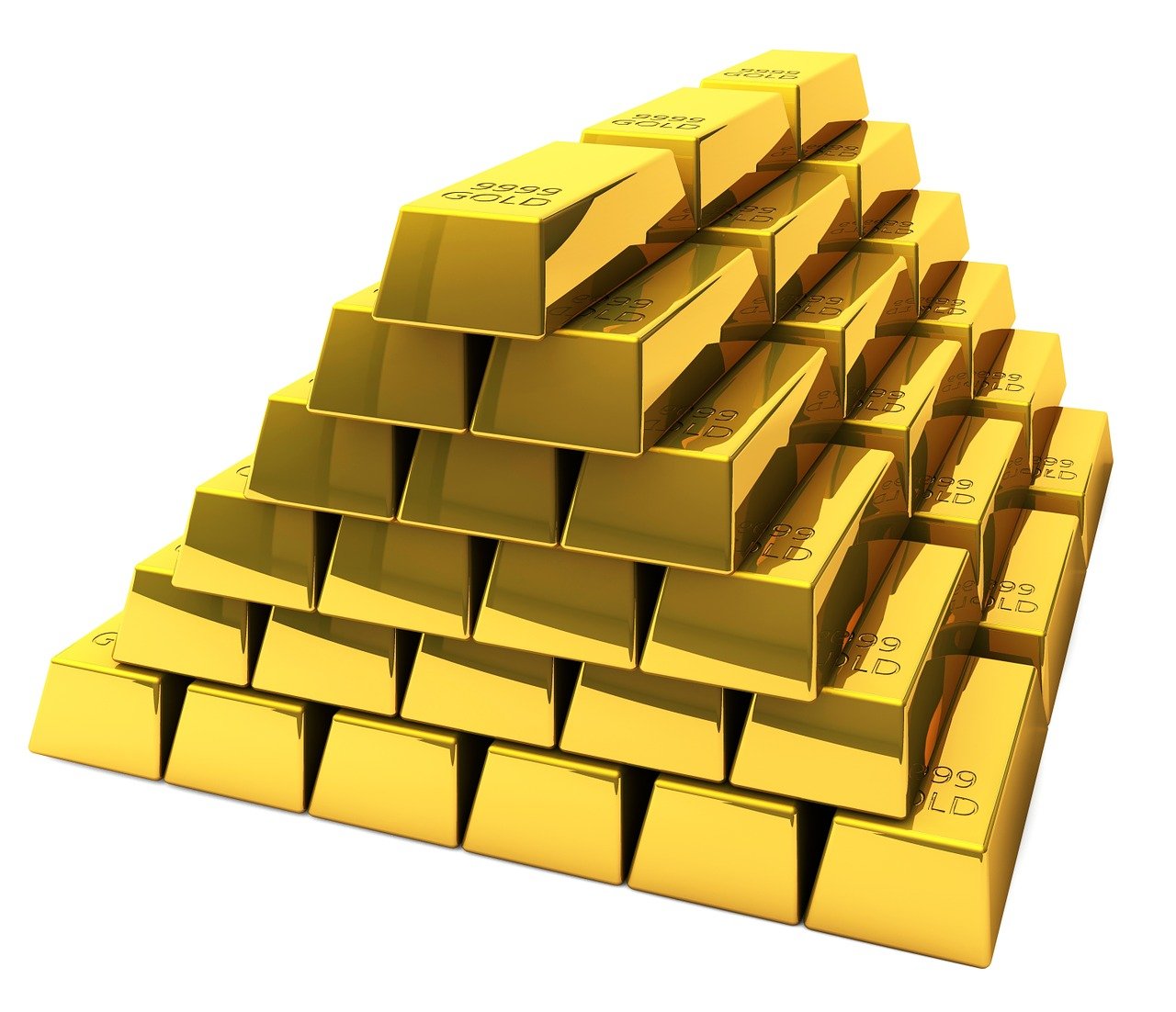
Introduction
In a world filled with investment options, precious metals have retained their allure and historical significance. This comprehensive guide explores the captivating world of precious metals, delving into their rich history, unique properties, and their role in shaping the global economy. From gold and silver to platinum and palladium, we’ll unravel the mysteries of these timeless assets, understand the factors that influence their value, and offer practical insights for investors looking to diversify their portfolios. Discover the benefits, risks, and future trends in precious metals investing in this essential guide.

The Historical Importance of Precious Metals
Throughout history, precious metals have played a vital role in shaping economies, cultures, and even the fate of nations. Gold, silver, platinum, and palladium, among others, have fascinated people since ancient times with their beauty and rarity.
Gold, in particular, has held a special place throughout history. It has served as a means of exchange, a store of value, and a symbol of power and wealth. Civilizations like Ancient Egypt, Rome, and China all revered gold, associating it with prestige, luxury, and even divinity. Gold’s allure has transcended time and place, serving as a testament to its historical significance.
Silver has also held cultural significance. Known for its lustrous beauty and versatile uses, silver has been valued for coinage, jewelry, and decorative art. From ancient Greek drachmas to Spanish silver reales used during the Age of Exploration, silver has facilitated trade and spread civilizations. Its abundance and affordability have bolstered its role as a medium of exchange, fostering prosperous economies.
In sum, precious metals have a rich historical significance intertwined with human civilization. These metals have commanded respect, admiration, and intrigue, attesting to their enduring allure. In the following section, we’ll delve deeper into understanding different precious metals and their unique properties.
Understanding Different Precious Metals
To grasp the essence of various precious metals, it’s essential to recognize their unique characteristics and uses. The primary precious metals include gold, silver, platinum, and palladium.
Gold, the most renowned, boasts a rich, yellow color and resistance to tarnish. This makes it highly valued in jewelry and decorative items. Besides its aesthetics, gold finds application in electronics, dentistry, and even as a form of currency. Silver, with its bright, white luster and excellent thermal and electrical conductivity, is used in jewelry, photography, electrical contacts, and industry.
Platinum and palladium, though lesser-known, possess distinct attributes and applications. Platinum, a dense, silver-white metal, finds use in catalytic converters, laboratory equipment, and jewelry production. Palladium, similar in appearance but lighter, sees application in catalytic converters, electronics, and dental uses.
Understanding these metals is vital for investors and collectors alike. Each metal has unique demand factors, price dynamics, and industrial applications. Familiarity with these aspects empowers individuals to make informed investment decisions and capitalize on potential benefits.
Factors Influencing Precious Metals’ Value
To grasp precious metals’ value, consider various factors influencing their worth. These factors significantly affect the market and precious metal prices, including gold, silver, platinum, and palladium.
Supply and demand dynamics are paramount, following basic economic principles. When demand surpasses supply, prices tend to rise; conversely, oversupply can lead to price declines. Understanding these dynamics helps investors anticipate price movements and make informed decisions.
Geopolitical events also wield influence. Political instability, conflicts, and economic crises impact the market. In uncertain times, investors often turn to safe-haven assets like gold and silver. These metals, viewed as stores of value and hedges against inflation, gain appeal amid turmoil. Monitoring global events and their potential market impact aids strategic positioning.
Economic indicators and monetary policies matter. Interest rates, inflation rates, and currency fluctuations can profoundly affect the market. Low interest rates drive investors toward alternatives like precious metals for potentially higher returns. Central bank policy changes also sway investor sentiment.
Understanding these factors is vital for prospective precious metal investors. Staying informed, analyzing market trends relative to supply and demand, geopolitical events, and economic indicators allows better navigation of precious metals’ complexities and potential for maximized returns.
Exploring Investing Benefits and Risks
Investing in precious metals offers benefits and risks for consideration. One advantage is potential long-term value appreciation. Historically, precious metals like gold and silver have maintained value and acted as inflation hedges. Amid economic fluctuations and depreciating currencies, these metals serve as wealth stores.
Another benefit is diversification. Precious metals show low correlation with other asset classes, aiding portfolio diversification and risk reduction. When stocks and bonds falter, precious metals’ value may rise, buffering against market declines.
However, precious metal investments carry risks. Price volatility is notable, influenced by global economic conditions, geopolitical events, and investor sentiment. Short-term fluctuations are common, emphasizing the importance of a long-term perspective. Physical bullion investment entails storage and insurance costs, while precious metal ETFs offer liquidity but involve potential price discrepancies.
Exploring benefits and risks is crucial for potential investors. Precious metals can diversify portfolios, offer wealth preservation, and present capital growth potential. Nonetheless, thorough evaluation aligning with individual financial goals is necessary.
Diversifying with Precious Metals
Diversification with precious metals effectively mitigates risks associated with traditional asset classes. Gold, silver, platinum, and palladium possess histories of retaining value and acting as inflation and uncertainty hedges. Allocating assets to these metals can enhance investment performance and wealth protection.
One key benefit is their inverse relationship with financial instruments. Amid economic downturns, precious metals often act as safe havens, preserving or increasing in value. For example, during the 2008 global financial crisis, gold prices surged as investors sought refuge from stock market volatility. This characteristic makes precious metals appealing additions to investment portfolios.
Precious metals also offer tangible, physical investment options. Unlike stocks or ETFs, which represent ownership in assets, physical bullion provides a sense of security and ownership. Owning gold coins or bars adds tangible wealth and independent protection against third-party risks.
In conclusion, diversifying with precious metals provides benefits like protection against market volatility and inflation. Incorporating these tangible assets enhances portfolio stability. In subsequent sections, practical tips for investing in gold and silver, along with exploration of platinum, palladium, and other precious metals, will be discussed. Strengthening knowledge and exploring opportunities can lead to a well-rounded investment strategy aligned with financial goals.
Practical Investment Tips for Gold and Silver
Gold and silver, esteemed safe-haven assets, are favored choices for diversifying investment portfolios. However, careful consideration and market knowledge are essential for successful investing. Here are practical tips for navigating the world of gold and silver investments:
- Research: Thoroughly research market trends and stay updated. Gold and silver prices are influenced by various factors, including economic conditions, geopolitical events, and supply and demand dynamics. Gathering insights from financial news, expert analysts, and online resources empowers informed decision-making.
- Investment Forms: Consider different investment forms. Physical bullion, such as coins and bars, provides tangible assets but requires secure storage and insurance. ETFs offer convenience and liquidity but lack physical ownership. Assess your investment goals and risk tolerance to choose the most suitable form.
- Long-Term Perspective: Maintain a long-term perspective. Precious metals have historically shown resilience and served as inflation and uncertainty hedges. Short-term volatility is common, so focus on the metals’ overall stability and long-term potential benefits.
- Diversification: Diversify your portfolio. Spreading investments across various asset classes reduces risk. Gold and silver’s low correlation with other assets makes them valuable diversification tools.
By implementing these practical tips, investors can navigate the gold and silver market with confidence. Understanding their unique qualities, value drivers, and investment options is essential for successful participation.
Exploring Other Precious Metals: Platinum, Palladium, and More
Investors seeking diversification beyond gold and silver may consider other precious metals like platinum and palladium. These metals have distinctive properties and investment potential:
- Platinum: Platinum is rare and valued for its resistance to corrosion. It finds use in catalytic converters, laboratory equipment, and jewelry production. Its scarcity and versatility make it an attractive investment option.
- Palladium: Palladium, lighter than platinum, is also used in catalytic converters, electronics, and dental applications. Its increasing demand in automotive sectors has bolstered its investment appeal.
Investing in these metals can provide a hedge against economic uncertainty and currency fluctuations. Their industrial applications contribute to potential price increases. However, investors should be aware of associated risks, such as supply disruptions or technological changes affecting demand.
Before investing in platinum, palladium, or other precious metals, thorough research and expert guidance are essential. Understanding market trends, supply and demand dynamics, and factors influencing metal value is crucial for informed decision-making. The diverse world of precious metal investments offers opportunities for a well-rounded investment strategy.
Investing in Precious Metals: Physical Bullion vs. ETFs
Deciding between physical bullion and precious metal ETFs is a significant choice in precious metal investments. Each option offers unique advantages and considerations:
- Physical Bullion: Investing in physical bullion provides direct ownership of the metal. Holding gold or silver coins and bars offers a tangible asset. Benefits include a sense of security and immediate access to your investment. However, storage and insurance are necessary and can entail additional costs.
- Precious Metal ETFs: ETFs are investment funds that track precious metal prices. They are traded on stock exchanges, providing easy access and liquidity. ETFs eliminate storage and insurance concerns as they are held by custodians. However, investors won’t physically possess the metal, which may be a drawback for some.
Ultimately, the choice between physical bullion and ETFs depends on individual preferences and investment goals. If tangibility and direct ownership are essential, physical bullion is a preferred choice. For convenience, accessibility, and liquidity, ETFs offer an attractive option. Consider factors like storage requirements, transaction costs, and personal needs when making your decision.
Precious Metals in Times of Economic Uncertainty
During economic uncertainty, precious metals play a pivotal role in investors’ strategies. Gold, silver, platinum, and palladium have historically served as safe-haven assets, retaining value and even appreciating in price during turbulent times.
One reason is their intrinsic value. Unlike fiat currencies prone to inflation and devaluation, precious metals have limited supply and require substantial resources for extraction. This scarcity provides a level of security and value.
Historically, precious metals have served as a store of wealth, used as currency and a means to preserve wealth. In modern times, they continue to be recognized and accepted globally, offering a reliable investment option during economic instability.
Furthermore, precious metals can act as a hedge against inflation. When fiat currencies lose purchasing power, gold and silver often maintain or increase their value, making them appealing investments in times of rising prices.
In conclusion, precious metals play a significant role during economic uncertainty. Their intrinsic value, historical significance, and ability to hedge against inflation and currency depreciation make them valuable additions to investment portfolios. Understanding different precious metals, factors influencing their value, and practical investment tips empowers informed decision-making in today’s complex investment landscape.
Long-Term Outlook and Future Trends for Precious Metals Investing
The future outlook for investing in precious metals remains positive. Several key trends and factors suggest that the demand for these assets will continue to grow:
- Emerging Market Demand: Emerging economies’ rising middle class drives increasing demand for luxury goods, including precious metal jewelry. This demand can boost precious metal prices.
- Currency Landscape: Central banks’ monetary expansion and currency devaluation are driving investors to seek alternative stores of value. Precious metals, with their scarcity and enduring worth, offer reliable hedges against inflation and currency depreciation.
While investing in precious metals offers potential benefits, it’s crucial to consider associated risks and market dynamics. Precious metals’ price volatility, storage requirements, and supply and demand factors all influence their performance.
In conclusion, the long-term outlook for investing in precious metals appears promising. Understanding the dynamics of this market, diversifying your investment portfolio, and staying informed about trends and factors affecting precious metal values are essential for successful investing in these timeless assets.
Frequently Asked Questions
What are the different types of precious metals?
The main types of precious metals include gold, silver, platinum, and palladium.
What factors influence the value of precious metals?
Several factors can influence the value of precious metals, including supply and demand dynamics, economic conditions, geopolitical events, inflation, and currency fluctuations.
What are the benefits and risks of investing in precious metals?
Investing in precious metals can provide a hedge against inflation, diversification in a portfolio, and potential long-term growth. However, risks include price volatility, storage and security concerns, and the possibility of economic factors affecting their value.
How can I diversify my investment portfolio with precious metals?
To diversify your investment portfolio with precious metals, you can consider allocating a portion of your assets to physical bullion, purchasing shares of precious metal ETFs, or investing in mining companies that extract these metals.
Should I invest in physical bullion or precious metal ETFs?
The choice between physical bullion and precious metal ETFs depends on your individual preferences and investment goals. Physical bullion offers ownership and possession of the metal, while ETFs provide convenience and liquidity. Consider factors such as storage requirements, transaction costs, and accessibility before making a decision.

